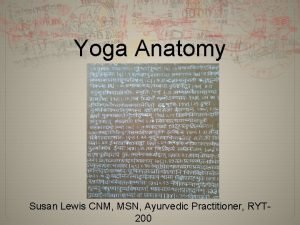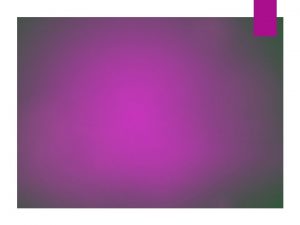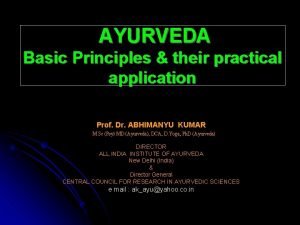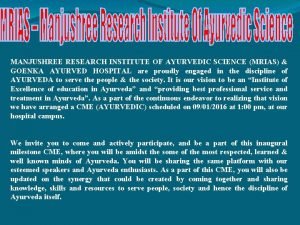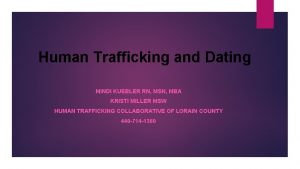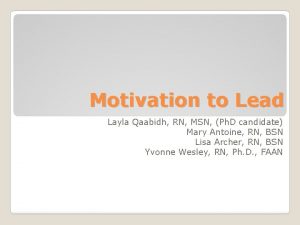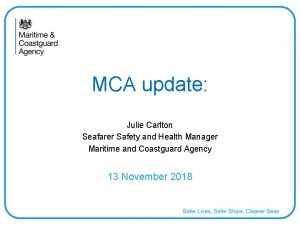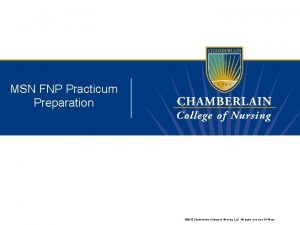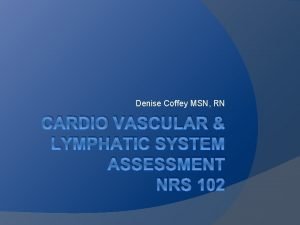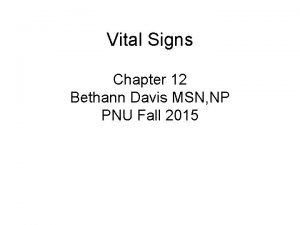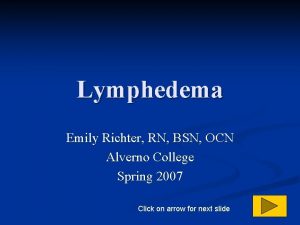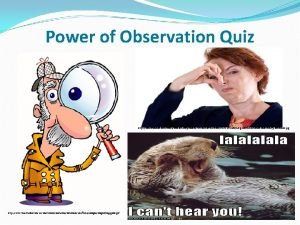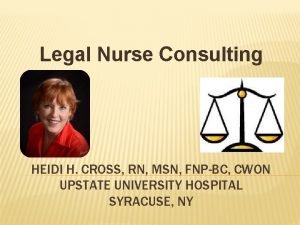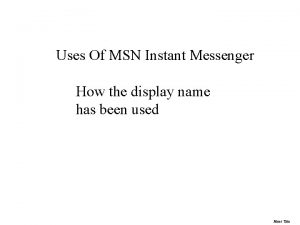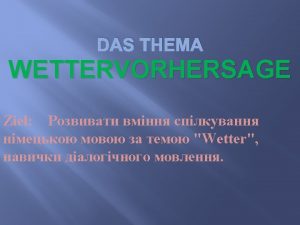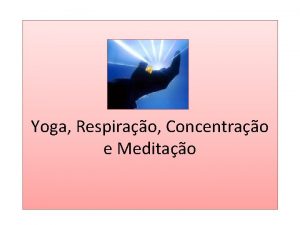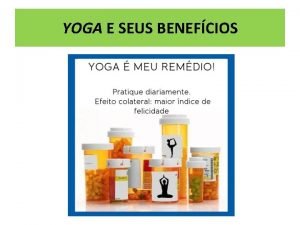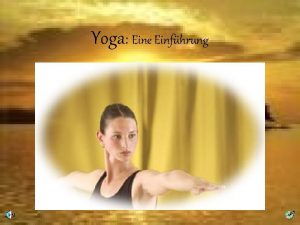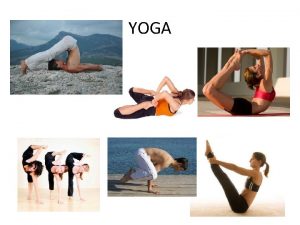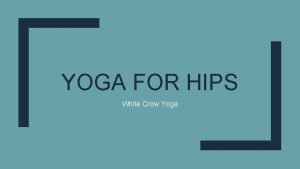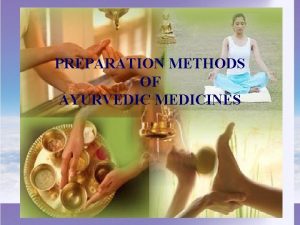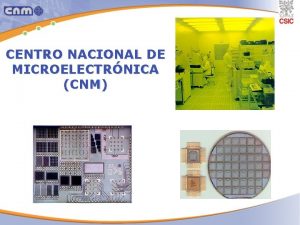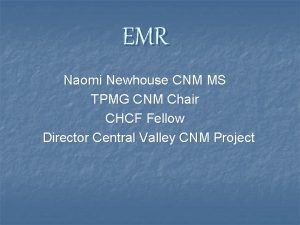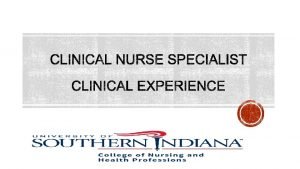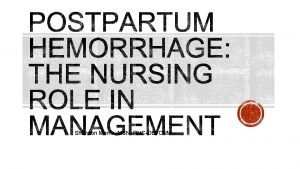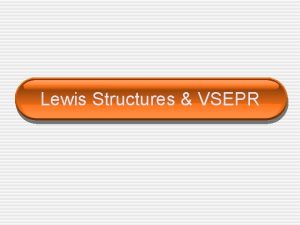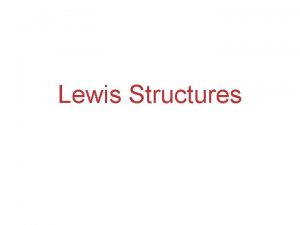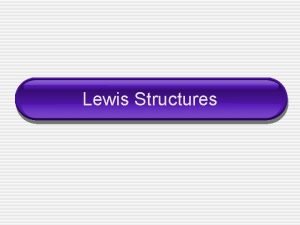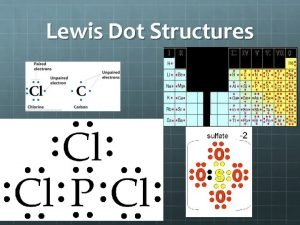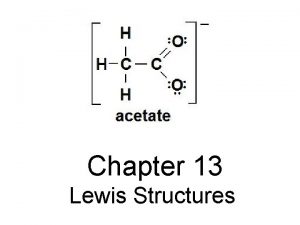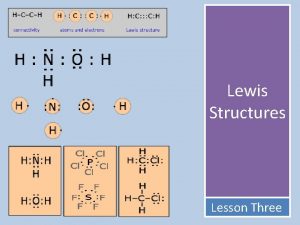Yoga Anatomy Susan Lewis CNM MSN Ayurvedic Practitioner


























- Slides: 26

Yoga Anatomy Susan Lewis CNM, MSN, Ayurvedic Practitioner, RYT 200

Outline � I. Introduction � II. Anatomy � A. External body parts � B. Skeletal System � C. Spine and Skull � D. Musculoskeletal system � E. Internal Organs � F. Connective Tissue and fascia � G. Joints (ball and socket vs. hinge)

Outline � III. Common Conditions � IV. Language of Anatomy for Instruction � V. Body Observations (Posture) � VI. Hips and Knees � VII. Low Back and Sacroiliac joint � VIII. Shoulders � IX. Test your knowledge � X. Close - questions

External Body Parts The following 6 pictures are from Geeta Iyengars book, Yoga a Gem for Women , 1990

The Skeletal System

The Spine and Skull

The Muscular System

The Internal Organs

The Internal Organs

The systems of the body

Cardinal Rules � Do not force yourself or others into poses � Stop if it hurts. � Learn healthy alignment. � Be careful in the most vulnerable areas. � Healthy stretches should be felt in the belly of the muscle not near the joint. � Teachers – inquire with students about injuries before class. � One of the biggest anatomy problems in Yoga is the mind. Not listening to the cues of the body because we think we should be able to do something.

Common Conditions The listed common conditions are perspectives and management as per the approach of Western allopathic medicine.

Common Conditions Sciatica � Sciatica – shooting leg pain (unilateral) � Causes: “pinched nerve” – herniated disc putting pressure on a nerve root, or piriformis muscle which is deep in the buttocks becomes tight or spasms and puts pressure on a nerve, or spinal stenosis where the spinal canal is narrowed and pressure is on a nerve or spondilolisthesis – slippage of a vertebrae causing a narrowed nerve opening pinching the nerve. � Treatment: Anti inflammatory meds and physical therapy, increase mobility, spinal injections or surgery. � 80 -90% will get better without surgery. 50% will recover in 6 weeks.

Sciatica

Common Conditions – fibromyalgia � Fibromyalgia – Generalized musculoskeletal pain, fatigue, altered sleep, memory and mood swings Pain is a constant dull ache. � Causes: unknown, sometimes infection can trigger it or post traumatic stress disorder. Low pain threshold and Genetic factors are also theories for the cause. � Treatments: analgesics, anti depressants, anti seizure drugs, and counseling.

Common Conditions – Multiple Sclerosis � Multiple Sclerosis – Debilitating disease where one’s body attacks itself at the protective myelin sheath on the nerve endings. This causes nerve deterioration. Not reversible. There are flare up’s and remissions. Some can become very handicapped and unable to walk or speak. Fatigue, numbness, weakness, tingling pain are symptoms. � Causes: unknown –Auto immune disease. � Treatments: drugs such as corticosteroids, physical therapy to stretch and strengthen and muscle relaxers.

Common Conditions – Rotator Cuff Injury � Rotator Cuff Injury – Irritation or damage to the muscles and tendons that connect the upper arm bone to the shoulder � Causes: tendonitis – inflamed tendons in rotator cuff – over use, over load, over head lifting. Bursitis – inflamed bursa. Strain or tear – poor posture, falling, repetitive stress, lifting and pulling. � Treatment: Exercise therapy strengthening these muscles and improving flexibility. Steroids and surgery.

Rotator Cuff Injury

Common Conditions – Knees � Knees – Meniscus tear is one of the most common problems with the knee – located in the C shaped cartilage that cushions the shin bone to the thigh bone. Causes: forcefully twisting or rotating the knee, pivoting, sudden stops and turns. Kneeling, deep squatting, heavy lifting Treatment: rest, ice, physical therapy to strengthen muscles of the knee to stabilize. Arch supports. Surgery and pain meds.

Knees

Common Conditions Glaucoma � Glaucoma – optic nerve damage due to increased pressure in the eye that can cause loss of vision. It is one of the leading causes of blindness in the US. � Causes: unknown cause but the fluid of the eye increases the intraocular pressure and the drainage system is not working. The reason is unclear. � Treatment: Eye drops such as prostaglandins. Beta blockers, etc… Surgery. DO NOT DO EXTREME INVERSIONS WITH GLAUCOMA (LIKE HEAD STAND) as this can increase the intraocular pressure even more.

Glaucoma

Common Conditions – Hypertension � Hypertension – the force of the blood against the artery wall can become high for various reasons such as narrowing of the blood vessel wall, or increased fluids in the body. � Causes: unknown, kidney problems, medications, illegal drugs such as cocaine, adrenal gland tumors, blood vessel defects. � Treatment: Drugs such as diuretics, or beta blockers, diet and lifestyle. If your student’s high blood pressure is not under control with medications, I suggest avoiding Headstands.

Common Conditions Pregnancy Optimally a woman will already be a seasoned practitioner of yoga prior to getting pregnant. Things to consider for seasoned practitioners. 1. Separation of the abdominal muscles. 2. Change in the center of gravity. 3. Avoid extreme twisting For those women who are not seasoned yoga practitioners, it is best to avoid over strenuous poses and extreme inversions. For balance, be near a wall and use lots of props. Postpartum (6 weeks): Avoid all inversions, strenuous, and twisting poses especially while bleeding.

Anatomy language Superior inferior Lateral medial anterior posterior distal proximal deep superficial ipsilateral Contra lateral Movements: flexion extension Lateral flexion rotation abduction adduction Internal rotation External rotation prone supine elevation depression retraction protraction Dorsi flexion Plantar flexion

� Thank you to the following for the knowledge they have shared. � Dr. Vasant Lad � Nancy Kirkland, Yoga teacher and counselor � Roger Cole, Yoga Anatomy teacher � My teachers at 12 south Yoga, Aretha Mc. Kinney, Gary Jaeger, Rachel Mathenia � Anna Guest Jelly – Yoga Teacher � Various BKS Iyengar and Geeta Iyengar texts.
 Msn yoga
Msn yoga Dallas midwife associates
Dallas midwife associates Nmcid
Nmcid Cnm 190
Cnm 190 Drive.google
Drive.google Ayurvedic theory
Ayurvedic theory Manjushree ayurved college
Manjushree ayurved college Msn dating
Msn dating Msn ph
Msn ph Msn 1886
Msn 1886 Chamberlain dnp curriculum
Chamberlain dnp curriculum Bruit msn
Bruit msn Vital signs definition
Vital signs definition Msn messenger chat rooms
Msn messenger chat rooms L fon
L fon Alverno direct entry msn
Alverno direct entry msn Msn cloud storage
Msn cloud storage Microsoft eou
Microsoft eou Msn quiz
Msn quiz Legal nurse consultant websites
Legal nurse consultant websites Messenger
Messenger Gpio_set_mask
Gpio_set_mask Instant messenger msn
Instant messenger msn Msn
Msn Msn wetter jakutsk
Msn wetter jakutsk Msn
Msn Msn
Msn
